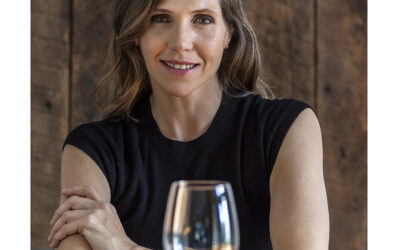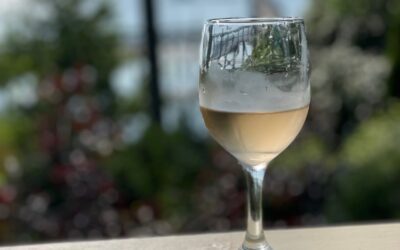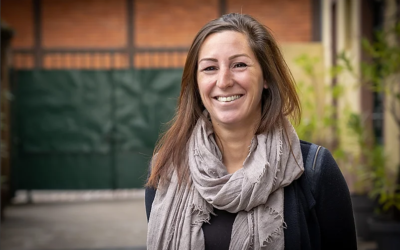Gamay Noir, or just Gamay, is the lesser-known grape that is the basis of wines from the Beaujolais region of France. It has a long and interesting history and was once one of the main grapes grown in Burgundy…until it was banished! I think it gets somewhat of a bad rap because of this, and also because many know it only from the fruity, bubblegum and kirsch flavored Beaujolais Nouveau wines that are released the third Thursday of November. Here’s a little information about it and how you can experience this grape at its best.
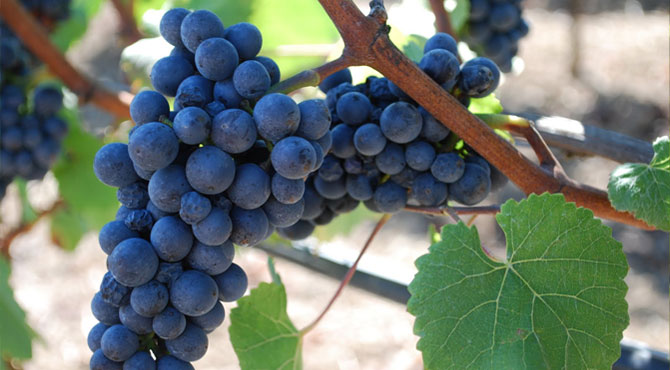
Wine Profile
Gamay is a light-bodied red wine that’s similar in taste to Pinot Noir. Its parents are Pinot Noir and the now little used grape Gouais.They are both from the Burgundy region of France. Gamay is generally held to have originated in the village of Gamay in the south of the Côte de Beaune (near St Aubin) Like Pinot Noir.
Like Pinot Noir, Gamay has lower tannins and is food friendly – think salmon or turkey as well as lighter meats. Gamay wines are usually more affordable than Pinot Noirs and there are a variety of styles in Beaujolais especially that suit all palates.
Gamay is often grown in cool-climate regions such as France, Canada, Switzerland, Oregon and New Zealand.
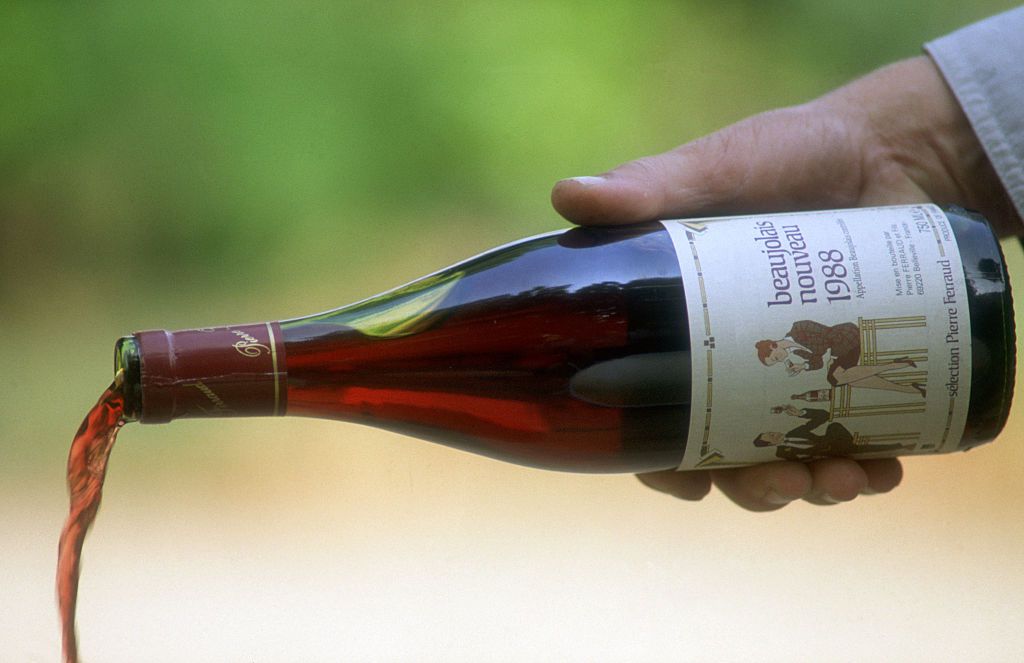
Aromas and flavors: Raspberry, tart cherry, cranberry, plum, mushroom, earth, forest floor, smoke, violet, baker’s yeast, (banana, bubblegum and kirsch, especially in Beaujolais Nouveau or in wines made through carbonic or semi carbonic maceration)
Acidity: High
Tannin: Low
Serving Temp: Slightly chilled at 54-58 °F (12-14 °C)
Alcohol: 10-13% ABV
All About Beaujolais
Beaujolais is a light red wine made with Gamay Noir grapes. The Beaujolais region of France produces 75% of the world’s Gamay wine.
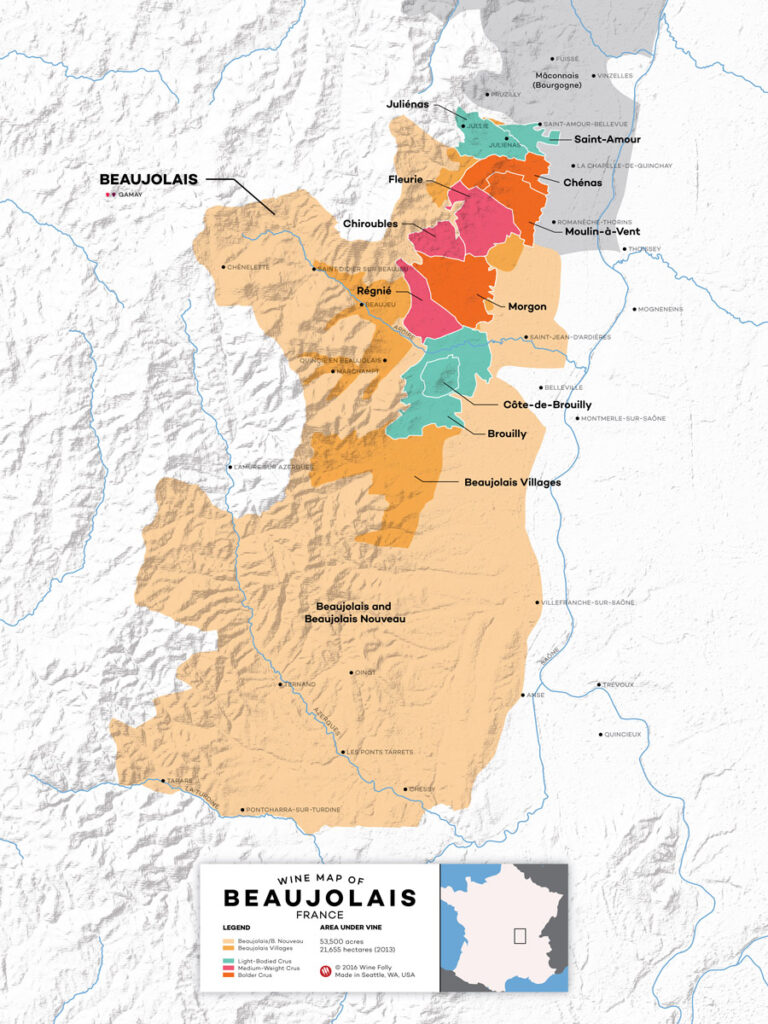
The type of wine called Beaujolais Nouveau is a trend started in 1951. It is a vin de primeur, fermented for just a few weeks after being harvested before being released for sale on the third Thursday of November. Distributors famously race to get the first bottles to different markets around the globe, where in Beaujolais Nounveau Day at 12:00 midnight the corks can be opened and the first wine of the vintage drunk. Look for celebrations in Paris and around the world as wine lovers enjoy this speaical and brief Gamapy expereince.
The most basic quality wines are labeled “Beaujolais”. This is the biggest appellation consisting of all 96 winemaking villages with most villages located in the south.
Then, the quality increases with the village (Beaujolais Villages), 38 official “Village” wines, 30 of these village names can appear on the label. These areas are a little more specialized and the wines a little deeper and darker in color and character. Many of these villages are located on granite or schist soils, so they have a more “mineral” character.
The top quality are the cru level wines. These wines can age, and often will have a similar taste character to red Burgundy. I absolutely LOVE any of the 10 Beaujolais cru and drink them interchangeably with Pinot Noirs.
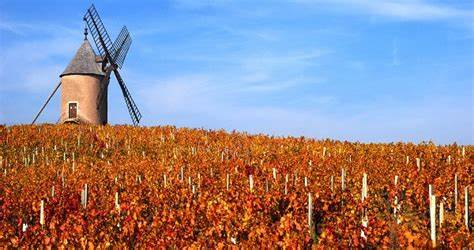
The 10 Crus of Beaujolais
For my wine studies I had to memorize them all and used the mnemonic “Susan Just Can’t Manage Five Children, Maybe Rhonda Can Babysit” – it works!
- Saint-Amour: Elegant aromas of red currant, iris and plum
- Juliénas: Bold aromas of strawberry, violets, cinnamon, and red currant
- Chénas: Medium-Bold aromas of rose and peony and spicy woodsy notes with age
- Moulin-à-Vent: Bold aromas of cherry, violets and black currant
- Fleurie: Elegant aromas of black currant, peach, iris and violets
- Chiroubles: Elegant aromas of violets, peony, red currant and cherry
- Morgon: Bold aromas of cherry, peach, plum and violets
- Régnié: Medium-Bold aromas of raspberry and black currant with a hint of spiciness
- Côte de Brouilly: Medium-Bold aromas of iris, plum and fresh grapes
- Brouilly: Bold raspberry, ripe peach and a touch of soil
Some Gamay History
Gamay has had a rough time but now at least is the highlight of the Beaujolais region.
It is a fairly vigorous grape variety that can thrive on its own compared to the finicky Pinot Noir. After the Plague in the Middle Ages, they were few people left ot tend the vines, so Gamay flourished and became a prominent grape in Burgundy because of its low maintenace – it continued to grow when Pinot Noir did not.
Back in the Middle Ages it was considered to be a lesser grape, the grape of the peasants, not nobility. The Burgundian Duke Philip II the Bold issued an order to banish it from the vineyards of Burgundy in 1395. He used these words to describe Gamay.
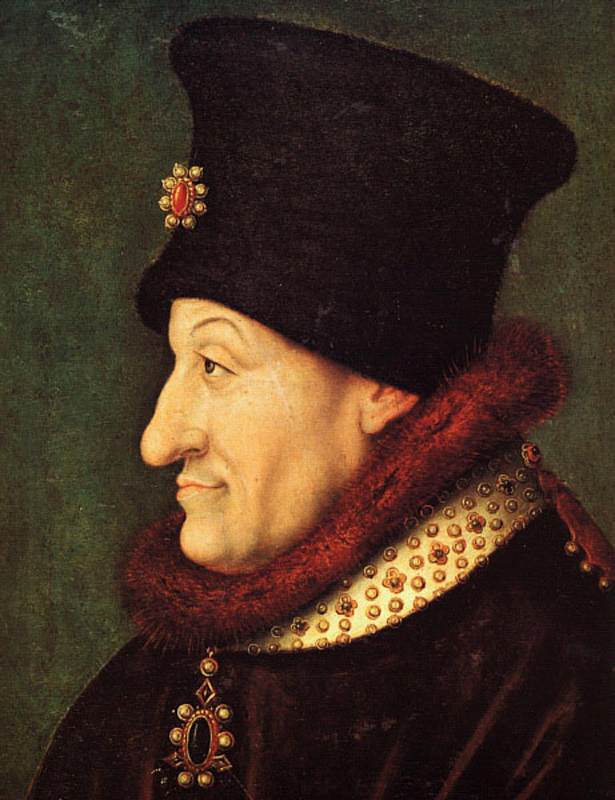
“Many of our subjects have planted vines of a very bad and very unfaithful plant called Gaamez, from which very bad plant comes a huge abundance of wine, for which the good places where good wine was once made have been left to be abandoned. And this wine from Gaamez is of such a nature that it can be dangerous to man and infect him with serious diseases because the mentioned wine that comes from the mentioned plant with the mentioned nature is full of great and horrible bitterness and becomes terribly smelly”.
It was the Dukes of Beaujeu who eventually made the wines fashionable. Originally, the town of Lyon was the main market for Beaujolais wine. In the olden days, goods from outside the area were subject to heavy taxes and this gave the local juice a boost. When the railroads were built in the 19th century, Beaujolais spread to Paris. While still considered inferior to Pinot Noir by many, it is constantly gaining fans around the world for its versality and great value for money.
Beaujolais Buying Tips
For top quality, look for the 10 Beaujolais Crus. Expect to spend around $20–$25.
Great values from Beaujolais Villages or Beaujolais Supérieur on good vintages (2017, 2016, 2015, 2014…) expect to spend around $12-15 a bottle.

